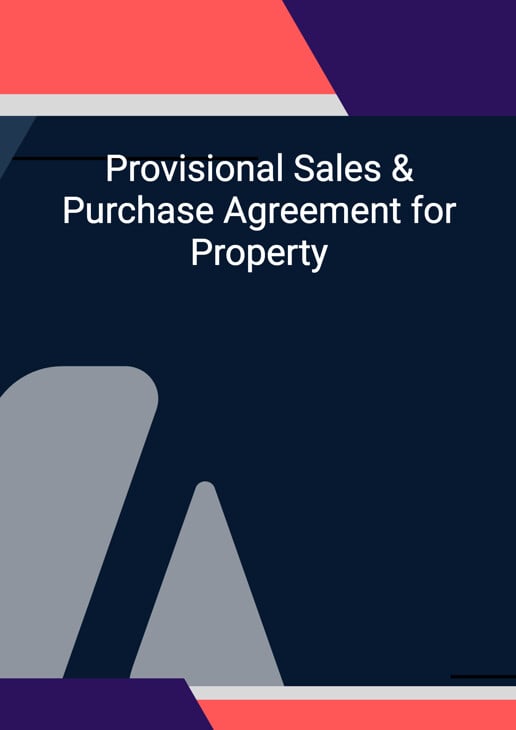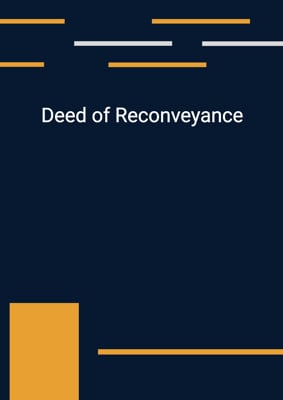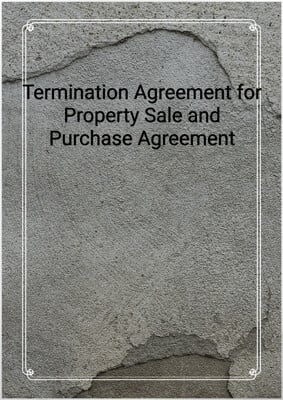How to Tailor the Document for Your Need?
01
Create Document
Fill in the details of the parties. You can click the "Fill with Member’s Information" button to complete it with information saved to your account.
02
Fill Information
Please fill in any additional information by following the step-by-step guide on the left hand side of the preview document and click the "Next" button.
03
Get Document
When you are done, click the "Get Document" button and you can download the document in Word or PDF format.
04
Review Document
Please get all parties to review the document carefully and make any final modifications to ensure that the details are correct before signing the document.
Document Preview
Document Description
The Provisional Sales & Purchase Agreement for Property is a legal document that outlines the terms and conditions for the sale and purchase of a property. This agreement is made between the vendor (the seller), the purchaser (the buyer), and the agent (the intermediary). The document begins with a detailed introduction, stating the purpose and parties involved in the agreement.
The agreement consists of several sections, each addressing specific aspects of the sale and purchase process. The first section, titled 'Premises,' states that the vendor agrees to sell and the purchaser agrees to purchase a specific property, referred to as 'the said premises.' The second section, titled 'Consideration,' outlines the purchase price of the property and the payment terms, including the initial deposit, further deposit, and balance payment.
The third section, titled 'Encumbrances,' states that the property is to be sold free from any encumbrances. The fourth section, titled 'Vacant Possession,' specifies whether the vendor will deliver vacant possession of the property upon completion or if the property is subject to an existing tenancy. The fifth section, titled 'Selling as Confirmor,' indicates whether the vendor is selling the property as a confirmor.
The sixth section, titled 'Lawyers & Stamp Duty,' states that both the vendor and the purchaser will appoint their own lawyers, who will be responsible for their respective legal costs. The section also mentions that the purchaser will bear the stamp duty. The seventh section, titled 'Purchaser Fails to Perform,' outlines the consequences if the purchaser fails to complete the purchase, including the forfeiture of the initial deposit and the vendor's right to sell the property to another party.
The eighth section, titled 'Vendor Fails to Perform,' states that if the vendor fails to complete the sale after receiving the initial deposit, the vendor must compensate the purchaser with a refund of the initial deposit and additional liquidated damages. The ninth section, titled 'Agent's Commission,' specifies the commission payable to the agent by both the vendor and the purchaser.
The tenth section, titled 'Compensation to Agent,' states that if either the vendor or the purchaser fails to complete the sale, the defaulting party must compensate the agent. The eleventh section, titled 'As Is Basis,' clarifies that the property is sold on an 'as is' basis. The twelfth section, titled 'Prior Negotiation,' confirms that this agreement supersedes any prior negotiations or agreements between the parties.
The thirteenth section, titled 'Chattels,' declares that the sale and purchase include the chattels, furniture, and fittings listed in the attached schedule. The fourteenth section, titled 'Residential/Non-Residential,' certifies whether the transaction relates to residential or non-residential premises for stamp duty purposes. The fifteenth section, titled 'Certificate of Value,' certifies that the transaction does not exceed a certain value.
The sixteenth section, titled 'Appointment of Agent,' confirms that the agent is the appointed agent for both the vendor and the purchaser. The seventeenth section, titled 'Disclosure of Personal Data,' states that the vendor and the purchaser consent to the agent disclosing and using their personal information for promotional purposes. The eighteenth section, titled 'Interpretation,' clarifies that the English version of the agreement prevails in case of any ambiguities. The nineteenth section, titled 'Remarks,' allows for any additional remarks or comments.
The document concludes with the signatures of the vendor, purchaser, and agent, along with a receipt of the initial deposit.
Overall, this Provisional Sales & Purchase Agreement for Property is a comprehensive legal document that covers all the necessary details and terms related to the sale and purchase of a property.
How to use this document?
Guidance for using the Provisional Sales & Purchase Agreement for Property:
1. Provide information: Enter the names, identity card/business registration numbers, and addresses of the vendor, purchaser, and agent. This ensures that all parties are clearly identified.
2. Specify the purchase price and payment terms: Clearly state the agreed purchase price and the payment schedule, including the initial deposit, further deposit, and balance payment. This ensures that both parties are aware of the financial obligations.
3. Address encumbrances: Confirm that the property is being sold free from any encumbrances. This protects the purchaser's interests.
4. Determine possession status: Specify whether the vendor will deliver vacant possession of the property or if it is subject to an existing tenancy. This avoids any misunderstandings regarding possession.
5. Clarify selling as confirmor: Indicate whether the vendor is selling the property as a confirmor. This may have legal implications.
6. Appoint lawyers and discuss stamp duty: Both the vendor and the purchaser should appoint their own lawyers to represent them. Discuss the allocation of legal costs and the responsibility for paying stamp duty.
7. Understand consequences of non-performance: Be aware of the consequences if either party fails to complete the sale. This includes the forfeiture of the initial deposit and potential compensation to the agent.
8. Review chattels included: Check the attached schedule to ensure that all the chattels, furniture, and fittings included in the sale are accurately listed.
9. Determine residential or non-residential status: Confirm whether the transaction relates to residential or non-residential premises for stamp duty purposes.
10. Comply with data disclosure: Understand and consent to the agent disclosing and using personal information for promotional purposes.
11. Seek legal advice if needed: If there are any uncertainties or concerns, consult with a lawyer to ensure a clear understanding of the agreement and its implications.
Note: This guidance provides a general overview and does not constitute legal advice. It is recommended to seek professional legal advice when using this document.
Not the right document?
Don’t worry, we have thousands of documents for you to choose from:














